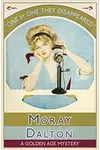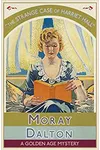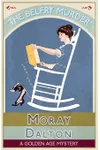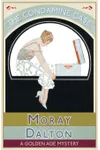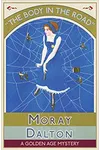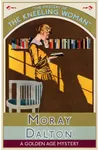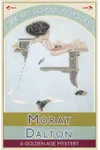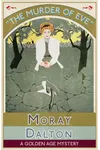Picture an English storyteller spinning tales of shadowy crimes and clever detectives—meet Moray Dalton! Known as the pen name of Katherine Mary Deville Dalton Renoir, this mid-20th-century author crafted over 20 thrilling detective novels, with her iconic Inspector Hugh Collier leading the charge. Though her name faded from the spotlight, Dalton’s gripping mysteries helped shape the Golden Age of Detective Fiction, blending evocative settings with unforgettable characters.
Born in 1881, Dalton’s life was as intriguing as her stories, marked by independence, a passion for Italy, and a knack for crafting puzzles that kept readers guessing. Let’s dive into her world, from her quiet beginnings to her lasting mark on crime fiction.
The Making of Moray Dalton
Katherine Dalton Renoir, born on May 6, 1881, in Hammersmith, London, was the only child of a Canadian father, Joseph Dixon Dalton, and an English mother, Laura Black Dalton. Growing up in a privileged yet isolated household, she was privately educated and lived with her parents in places like Southampton and Somerset. Her father’s adventurous past as a gold miner in British Columbia sparked her imagination, while her love for Italy—later woven into her novels—hinted at a wanderlust that colored her work. After her father’s death in 1919 and a brief marriage to Louis Jean Renoir in 1921, which produced a son, Dalton forged her own path, settling in Worthing, Sussex, and focusing on her writing.
Her early career began with two mainstream novels, Olive in Italy (1909) and The Sword of Love (1920), both well-received but not her true calling. By 1924, at age 42, she found her groove with crime fiction, launching her legacy with The Kingsclere Mystery.
Moray Dalton’s Unforgettable Stories
Dalton’s crime novels are a masterclass in Golden Age detective fiction, blending intricate plots, atmospheric settings, and vivid characters. Her most famous creation, Inspector Hugh Collier, a young, woman-shy Scotland Yard sleuth, debuted in One by One They Disappeared (1929). This stylish mystery, centered on a group of shipwreck survivors hunted by a killer, showcases her knack for suspense and clever twists. Another standout, The Strange Case of Harriet Hall (1936), weaves a chilling tale of murder in an isolated cottage, praised for its engaging characters and tight plotting.
Her private inquiry agent, Hermann Glide, introduced in The Body in the Road (1930), added another layer to her fictional world, often crossing paths with Collier in novels like The Night of Fear (1931), a Christmas-themed mystery brimming with tension. Dalton’s style leaned on evocative descriptions—think moody English countryside or sunlit Italian vistas—and strong social commentary, exploring themes of gender and class. Her 29 mysteries, published until 1951, stood out for their literary quality, though she never chased fame like contemporaries Dorothy Sayers or Margery Allingham.
Unlike many peers, Dalton wrote under a male pseudonym to compete in the male-dominated genre, a choice that reflected her bold, independent spirit. Her stories, while rooted in England, often featured Italian elements, a nod to her fascination with the country’s culture and landscapes.
Why Moray Dalton Matters
Moray Dalton’s work helped define the Golden Age of Detective Fiction, a period in the 1920s and 1930s when puzzle-like mysteries reigned supreme. Her novels, praised by critics like the Times Literary Supplement for their vivid style, offered more than just whodunits—they explored human nature and societal divides. Though overshadowed by bigger names, her influence endures among collectors and classic mystery fans, thanks to reprints by Dean Street Press and champions like crime historian Curtis Evans.
Her obscurity today only adds to her allure. Dalton wrote for the joy of storytelling, not fame, leaving behind an estate worth nearly a million dollars in 1963. Her legacy reminds us that even forgotten voices can shape a genre, inspiring modern crime writers to craft stories with heart and depth.
- Born: May 6, 1881, Hammersmith, London
- Died: February 22, 1963, Worthing, Sussex
- Key Works: One by One They Disappeared, The Strange Case of Harriet Hall, The Night of Fear
- Pen Name: Moray Dalton, used to navigate the male-dominated crime genre
Ready to unravel a classic mystery? Snag One by One They Disappeared or The Strange Case of Harriet Hall and dive into Moray Dalton’s thrilling world of crime and intrigue!
